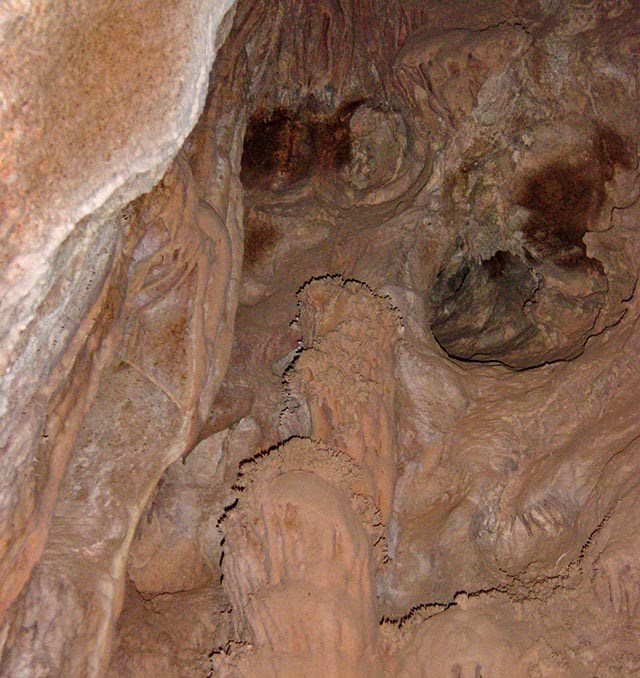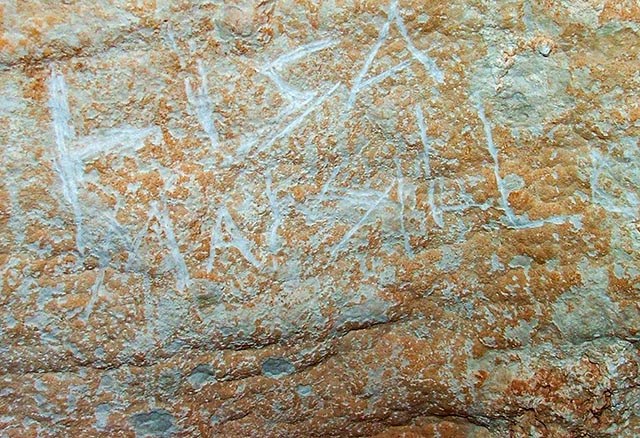
Grand Canyon caves are unique resources with fragile environments that provide habitat for a range of cavern-dwelling wildlife, including sensitive bat species. Many caves also play a major role in regional hydrology, as evidenced by incredible waterfalls and substantial streams emerging from places like Vaseys Paradise, Cheyava Falls, and Roaring, Thunder, and Tapeats springs. Under the current park policy, all caves are currently closed to visitation, except for research purposes. Please contact Ronda Newton, Research Coordinator, for additional information (928) 638-7447. 
Cave Monitoring
This engraving was scratched in a Grand Canyon cave. Unfortunately, due to the unique preservative quality of caves, this mark is irreversible.Dealing with unauthorized access (caving in the Park is illegal) is one of the biggest problems the cave management staff of the park's Physical Science Program deals with in Grand Canyon National Park. The caves of Grand Canyon National Park represent a unique and fragile resource. Mineral formations, fossil bones of extinct animals and prehistoric artifacts have been found in Grand Canyon caves.
These resources are non-renewable and have both scientific and aesthetic value. In order to evaluate man-caused impacts to Grand Canyon caves, there is an established monitoring program in the park.
|
Last updated: May 11, 2024
